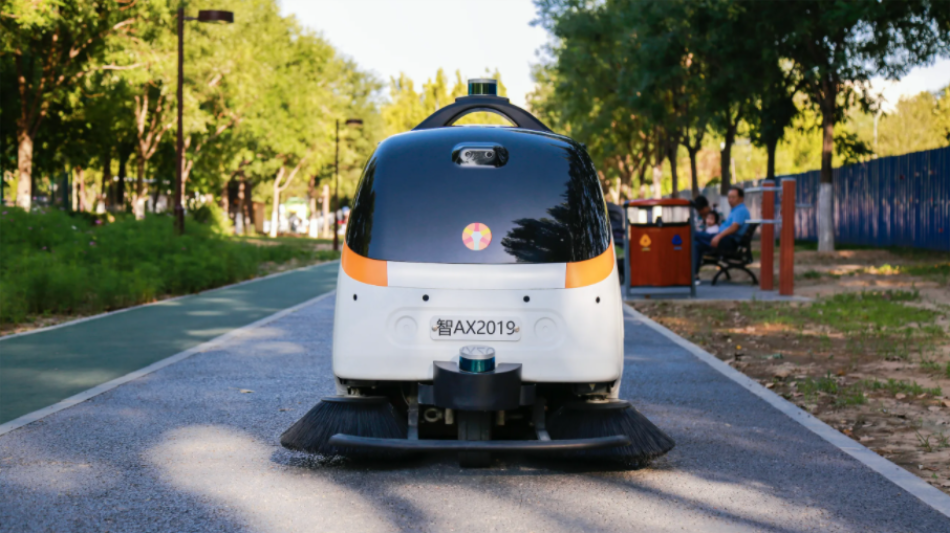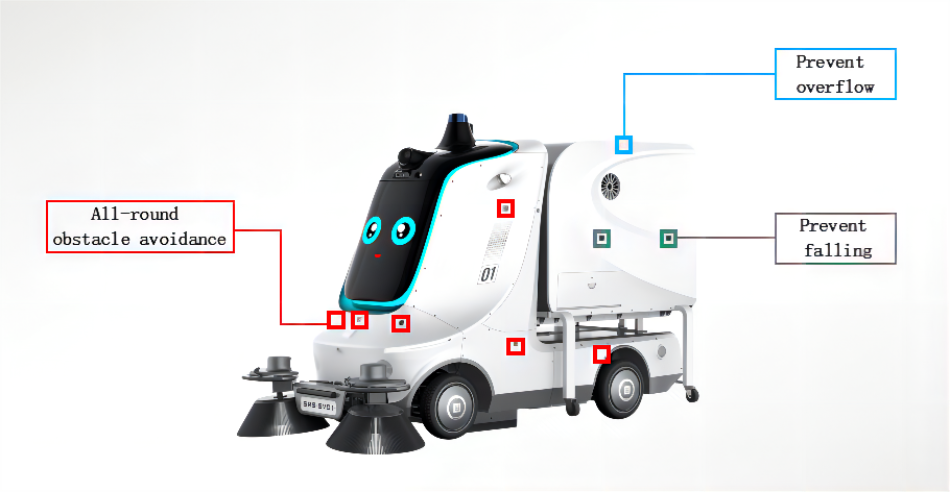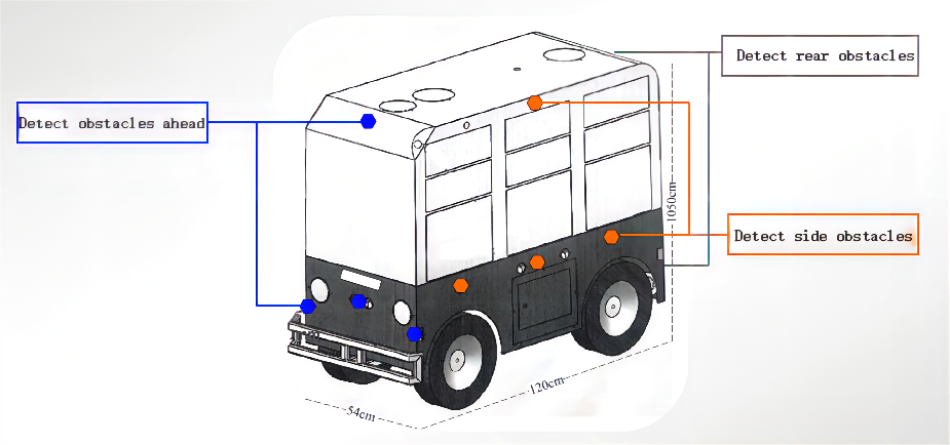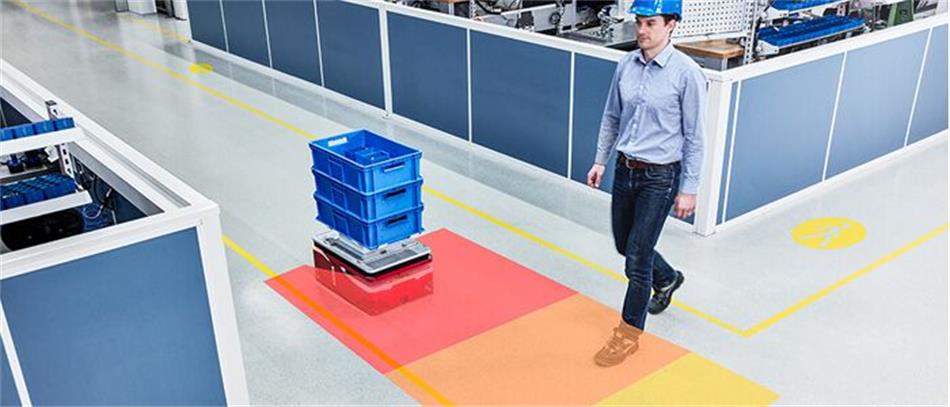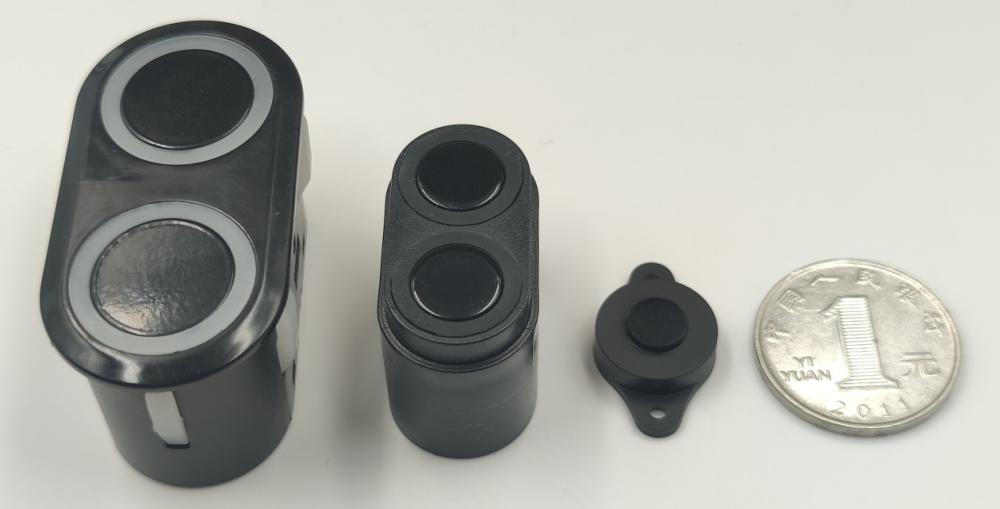According to the statistics of new strategy unmanned Driving Industry Institute, more than 200 important financing events were disclosed in the autonomous driving industry at home and abroad in 2021, with a total financing amount of nearly 150 billion yuan (including IPO). Inside, nearly 70 financing events and more than 30 billion yuan were raised by low-speed unmanned product and solution providers.
In the past two years, unmanned delivery, unmanned cleaning and unmanned storage landing scenarios have sprung up, and the strong entry of capital has pushed unmanned vehicles into the development’s “fast lane” . With the development of multi-mode sensor fusion technology, pioneering representatives have entered the “professional” team, performing various tasks such as road cleaning, posting and express, shipping delivery,etc.
Unmanned cleaning vehicles in working
As a “future vocational vehicle” that replaces manpower, the obstacle avoidance solutions applied must not be sloppy in order to win in the emerging industry, and the vehicle must be empowered according to the work scenario, such as the unmanned vehicle in the sanitation industry should have the function of stock identification; with the function of safe obstacle avoidance in the delivery industry; with the function of emergency risk avoidance function in the storage industry……
- Sanitation industry: a trinity of intelligent sensing scheme
Sanitation industry – Trinity of intelligent sensing scheme presented
The Beijing Winter Olympic’s “cleaner” Candela Sunshine robot , uses a trinity of intelligent sensing scheme, equipped with 19 ultrasonic radars, enabling the robot to has all-round obstacle avoidance, overflow prevention and anti-dumping functions
All-round obstacle avoidance
The rear is equipped with 2 ultrasonic radars for reversing monitoring and warning of obstacles, 3 ultrasonic radars under the front and 6 ultrasonic radars on the sides for horizontal, vertical and oblique all-round advancement and obstacle avoidance functions.
Overflow prevention
Install a sensor at the top of the vehicle’s loading area to realize the function of loading situation monitoring and ensure that the loading capacity meets the safety standards.
Anti-dumping
Prevents the split section from tipping over due to external forces in a non-loaded or under-loaded state, endangering public safety.
- Delivery industry:comprehensive intelligent obstacle avoidance scheme
Delivery industry – partial demonstration of comprehensive intelligent obstacle avoidance scheme
Compared to long-haul logistics, the core of the delivery industry scenario lies in short-haul and high-frequency, which means that unmanned delivery vehicles must be designed to be more flexible and safer to cope with complex urban scenarios, such as building shuttling and alleyway obstacle avoidance. DYP has provided a comprehensive intelligent obstacle avoidance scheme to Zhixing Technology, making its product become unmanned delivery vehicle to be tested in a semi-open environment in China.
Front and rear obstacle avoidance
One ultrasonic radar is fitted at the top of the front and rear for detecting higher obstacles, such as height restriction poles; three ultrasonic radars are fitted at the bottom of the front and rear for detecting low and front side obstacles, such as restriction poles. At the same time, the ultrasonic radars at the front and rear ends are able to secure the unmanned vehicle for reversing or turning.
Lateral obstacle avoidance
One ultrasonic radar is installed above each side to detect high side obstacles and assist in activating the express delivery function; three ultrasonic radars are installed below each side to detect low side obstacles such as road edges, green belts and standing poles. In addition, the ultrasonic radars on the left and right sides are able to find the right “parking space” for the unmanned vehicle and complete the automatic parking successfully.
- Storage industry: emergency avoidance and route optimization scheme
Diagram of AGV obstacle avoidance
Common warehouse unmanned vehicles are positioned for local path planning through infrared and laser technology solutions, but both of them are affected by light in terms of accuracy, and collision hazards may occur when multiple carts cross paths in a warehouse. Dianyingpu provides emergency risk avoidance and route optimization solutions for the warehousing industry that are not affected by light, using ultrasonic radar to help warehouse AGV achieve autonomous obstacle avoidance in warehouses, timely and accurate parking in times of crisis to avoid collisions.
Emergency avoidance
When the ultrasonic radar detects an obstacle enters the warning area, the sensor will feed the orientation information of the nearest obstacle to the unmanned trolley to the AGV control system in time, and the control system will control the trolley to slow down and brake. For those obstacles not in the forward area of the trolley, even if they are close, the radar will not warn to ensure the efficiency of the trolley working.
Route optimization
The unmanned vehicle uses the laser point cloud combined with the high-precision map for local path planning and obtain a number of trajectories to be selected. Then, the obstacle information obtained by ultrasound is projected and back-calculated to the vehicle coordinate system, the obtained trajectories to be selected are further filtered and corrected, finally the optimal trajectory is derived, and the forward movement is based on this trajectory.
- Range capability as far as 5m, blind spot as low as 3cm
- Stable, unaffected by light and colour of the measured object
- High reliability, meet the vehicle class requirements
Post time: Aug-30-2022
